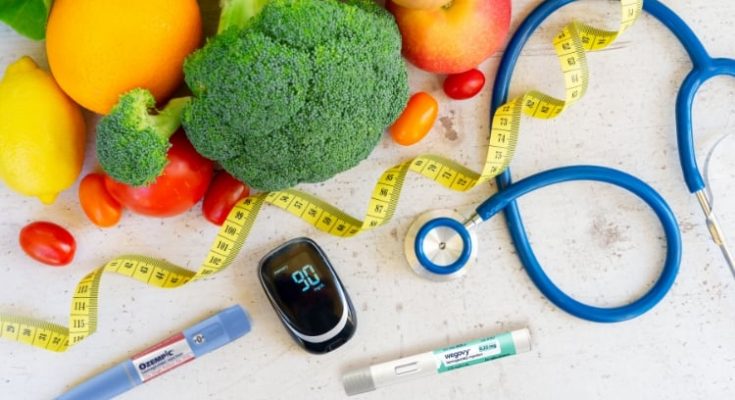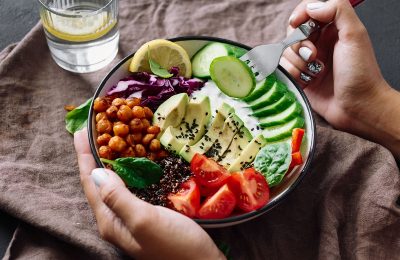In an exciting development, a groundbreaking weight loss injection known as Wegovy is set to hit the shelves of local pharmacies later this year. This prescription-based drug is poised to bring a ray of hope to countless individuals in the UK who find themselves trapped in the frustrating cycle of yo-yo dieting.
Wegovy, dubbed a “miracle” by adoring fans and endorsed by numerous beloved celebrities, promises to be a game-changer in the battle against excess weight. With its imminent availability to the general public, this cutting-edge solution offers renewed optimism to those seeking effective long-term weight management.
For years, yo-yo dieting has plagued individuals, as they endure the endless cycle of weight loss and regain. Fad diets and temporary fixes often lead to disappointment and a sense of hopelessness. Wegovy aims to break this cycle by providing a sustainable and medically approved solution to weight loss struggles.
By harnessing the power of science, Wegovy tackles weight management from a unique angle. This innovative injection works by targeting the body’s hunger and satiety receptors, ultimately curbing appetite and reducing food cravings. With Wegovy, individuals can expect a significant reduction in their desire to overeat, allowing them to establish healthier eating habits and maintain a more balanced lifestyle.

The upcoming availability of Wegovy in local pharmacies signifies a turning point in the weight loss industry. This remarkable development not only offers an alternative to traditional weight loss methods but also provides an opportunity for millions of Brits to regain control of their health and well-being.
As anticipation builds for Wegovy’s arrival on the high street, experts and individuals alike eagerly await the chance to harness the transformative effects of this groundbreaking weight loss injection. With its potential to revolutionize the weight loss journey, Wegovy is poised to become a household name, empowering individuals to break free from the cycle of yo-yo dieting and embrace a healthier future.
The highly acclaimed weight loss injections, reportedly favored by billionaire tycoon Elon Musk and rumored to have aided Kim Kardashian in donning her iconic Marilyn Monroe-inspired dress at the Met Gala, are generating a buzz as they prepare to make their way onto the commercial market.
Clinical trials have showcased promising results, with participants receiving the injections experiencing an average weight loss of 12 percent more compared to those who received a placebo. This revelation has raised hopes for those who have struggled with shedding excess pounds, offering a potential solution to their long-standing battle with weight management.
However, the trials also unveiled a significant downside to the injections. Approximately half of the participants experienced various gastrointestinal issues, ranging from nausea and bloating to acid reflux, constipation, and diarrhea. This revelation has sparked concerns about the side effects and overall tolerability of the injections.
Moreover, despite the initial success in shedding weight, a significant number of individuals who discontinued the weekly injections eventually regained two-thirds of the pounds they had previously lost. This finding has cast a shadow of doubt on the injections’ long-term effectiveness in sustaining weight loss.
While the weight loss injections have garnered attention for their association with high-profile figures and their potential to kickstart weight loss journeys, the reported side effects and challenges in maintaining long-term results have prompted a cautious approach.
As discussions surrounding the injections continue, researchers and medical professionals are working diligently to address the concerns and optimize the drug’s efficacy, striving to strike a balance between rapid weight loss and sustainable, lasting results. As the injections inch closer to becoming available to the general public, a thorough understanding of their benefits and drawbacks will be crucial in determining their place in the arsenal of weight loss strategies.
While the anticipated cost of the weight loss injection Wegovy may deter some, fear not, as there are simpler and more budget-friendly approaches to achieving weight loss goals. According to nutritionist Emma Beckett, hailing from the University of Newcastle, Wegovy’s effectiveness lies in its appetite-suppressing properties.

To replicate this effect without relying on expensive pharmaceuticals, Beckett suggests exploring natural alternatives. One key ingredient found in Wegovy, semaglutide, functions by emulating the role of the natural hormone GLP-1, responsible for regulating appetite.
By incorporating certain dietary choices, individuals can harness the power of GLP-1 naturally. Beckett recommends focusing on foods that promote satiety, such as those rich in fiber and protein. High-fiber options, such as whole grains, fruits, and vegetables, can help curb hunger and maintain a feeling of fullness. Additionally, protein-rich foods, including lean meats, fish, legumes, and dairy products, can contribute to longer-lasting satiety, reducing the urge to overeat.
It’s worth noting that while these dietary adjustments can support weight loss efforts, they may not replicate the targeted effects of Wegovy entirely. However, for individuals seeking a more accessible and cost-effective path to shedding pounds, Beckett’s recommendations offer a practical starting point.
By embracing a well-balanced diet that emphasizes fiber and protein, individuals can potentially harness their body’s natural mechanisms to promote satiety and support weight loss. While Wegovy may remain out of reach for some due to financial constraints, these nutritional strategies provide an avenue for individuals to achieve their weight loss goals without breaking the bank.
Nutritionist Emma Beckett, in her insightful article on The Conversation, highlights that the hormone GLP-1 plays a pivotal role in our body’s response to food consumption. She explains that GLP-1 is naturally produced as a response to nutrient detection during meals, serving as a vital component of the signaling pathway that communicates to our bodies that we have eaten.
When GLP-1 is activated, it prepares our bodies to efficiently utilize the energy derived from the food we consume. This intricate mechanism helps regulate our appetite and sets the stage for optimal energy utilization.
Beckett’s explanation sheds light on the importance of GLP-1 in our overall metabolic processes. Understanding the role of this hormone provides valuable insights into how our bodies respond to and process the nutrients we ingest.
By comprehending the interplay between GLP-1 and our food intake, researchers and health professionals can explore innovative ways to enhance this natural signaling pathway, potentially offering alternative strategies for weight management and overall well-being.
As we unravel the complexities of our body’s hormonal systems, the significance of GLP-1 in orchestrating our response to food continues to captivate the scientific community, opening up new avenues for exploration in the field of nutrition and weight management.
Certain foods can stimulate a similar response to GLP-1, helping to promote satiety and regulate appetite. Here are some examples:
- High-Fiber Foods: Foods rich in dietary fiber, such as whole grains, legumes, fruits, and vegetables, can elicit a satiety response. Fiber adds bulk to your meals, making you feel fuller for longer and reducing the likelihood of overeating.
- Protein-Rich Foods: Including lean meats, poultry, fish, eggs, dairy products, and plant-based protein sources like tofu and legumes in your diet can trigger feelings of fullness. Protein takes longer to digest, providing sustained energy and keeping hunger at bay.
- Healthy Fats: Incorporating sources of healthy fats, such as avocados, nuts, seeds, and olive oil, can contribute to satiety. Healthy fats slow down digestion and help regulate blood sugar levels, promoting a longer-lasting feeling of fullness.
- Low-Glycemic Index Foods: Choosing foods with a low glycemic index (GI) can help regulate blood sugar levels and prevent spikes and crashes in energy. Low-GI foods include whole grains, non-starchy vegetables, and legumes.
- Spices and Herbs: Certain spices and herbs, such as ginger, cayenne pepper, cinnamon, and turmeric, have been suggested to have appetite-suppressing properties. They can add flavor to meals while potentially helping to curb cravings.
- Water-Rich Foods: Foods with high water content, like soups, stews, fruits, and vegetables, can increase satiety. The water content adds volume to the food without adding excessive calories, promoting a sense of fullness.
Indeed, including certain foods in your diet can potentially help support GLP-1 levels. Here are some examples:
- Avocados: Avocados are a nutrient-dense fruit that contains healthy monounsaturated fats, fiber, and various vitamins and minerals. These properties may contribute to promoting GLP-1 secretion and enhancing satiety.
- Nuts: Nuts, such as almonds, walnuts, and pistachios, are rich in healthy fats, protein, and fiber. Including a moderate amount of nuts in your diet can provide a satisfying crunch while potentially supporting GLP-1 levels.
- Lean Protein Sources like Eggs: Eggs are a valuable source of high-quality protein and contain essential amino acids. Protein-rich foods like eggs can stimulate the release of GLP-1 and help regulate appetite.
- Vegetables: Non-starchy vegetables, such as leafy greens, broccoli, and bell peppers, are packed with fiber, vitamins, minerals, and antioxidants. These nutrient-dense foods can contribute to a well-rounded diet and potentially influence GLP-1 secretion.
- Whole Grains: Whole grains like quinoa, brown rice, and oats are rich in fiber and can aid in maintaining stable blood sugar levels. This may positively impact GLP-1 release and help regulate appetite.
Determining which approach is more effective, between medication and dietary changes, depends on individual circumstances and preferences
Medication, such as Wegovy, can offer a more direct and potentially faster route to weight loss. It can help suppress appetite and aid in achieving significant weight loss. However, it’s important to consider the potential side effects associated with medications, such as nausea, vomiting, and digestive issues. Additionally, once medication is discontinued, the effects on appetite suppression may diminish, and individuals may experience a return to previous levels of hunger.
On the other hand, dietary changes carry fewer risks in terms of side effects, but they require more time and effort. Adjusting one’s diet to include nutrient-dense foods, fiber, and protein can support weight loss efforts in a more natural and sustainable manner. However, external factors like cost, time constraints, skills in meal preparation, and accessibility to healthy food options can pose challenges in adhering to a healthy eating plan.
Individual circumstances and preferences play a crucial role in determining the most effective approach. For some individuals, medication may be the preferred and most effective tool in achieving weight and insulin-related goals. Others may find that implementing dietary changes alone can lead to successful weight loss outcomes.
It’s worth noting that while Wegovy is anticipated to become available, its current availability is limited, with Saxenda being the currently offered weight-loss injection by the NHS. Saxenda is typically accessible through weight-management clinics led by experts, requiring a referral for access.
Ultimately, consulting with healthcare professionals can provide personalized guidance and help determine the most suitable approach based on individual needs and circumstances.
©russwatch.com



